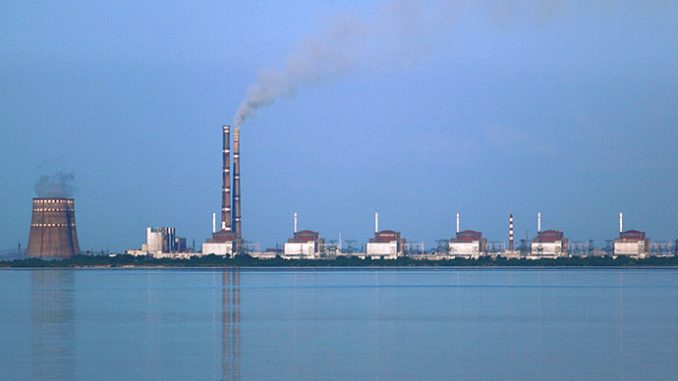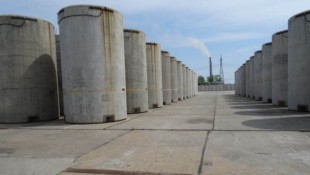
Serious concerns have been raised by environmentalists and atomic power experts over the way nuclear waste is being stored at the Zaporizhia nuclear power plant, Europe’s largest and just 200km (124 miles) away from the front line in Donbass.
More than 3,000 spent nuclear fuel rods are being stored in the open air in mental casks close to the perimeter fence at the Zaporizhia nuclear power plant in conditions that have shocked environmentalists. Nuclear experts say the waste should have another secondary containment structure, such as a building with a roof.

BYPASS THE CENSORS
Sign up to get unfiltered news delivered straight to your inbox.
You can unsubscribe any time. By subscribing you agree to our Terms of Use
Latest Video

“With a war around the corner, it is shocking that the spent fuel rod containers are standing under the open sky, with just a metal gate and some security guards waltzing up and down for protection. It is unheard of when, in Germany, interim storage operators have been ordered by the court to terror-proof their casks with roofs and reinforced walls,” Patricia Lorenz, a Friends of the Earth nuclear spokeswoman who visited the plant on a fact-finding mission, told the Guardian, who report:
Ukraine’s conflict in Donbass is 124 miles away from the plant, but Gustav Gressel, a fellow at the European Council of Foreign Relations thinks the front line is too far away – for now – to be at risk from fighting.
However, locals still fear for the potential consequences if the conflict was to spread in the plant’s direction. Just three decades ago, an explosion at the Chernobyl nuclear power plant north of Kiev released a radioactive cloud that poisoned vast tracts of land.
“People are scared because the conflict zone is quite near,” Vasiliy Ivanovic, a former policeman turned environmental volunteer told the Guardian. “If Putin wants to connect Russia to the Crimea, the route goes through Mariupol. The Russian troops are already near there, and they have missiles that could hit the power plant.”
Ukrainian forces repelled attacks by Russian-backed separatist rebels in Mariupol a year ago, but two Ukrainian troops were injured during clashes in the strategic port city earlier this month.
Any separatist offensive in the region could threaten the Zaporizhia plant because of Russian military tactics. Initial barrages against frontline positions are often followed with bombardments of possible lines of defence.
“The Russians use a large amount of multiple rocket-propelled systems that are not entirely precise, and they don’t really care where they land,” said Gressel.
The Zaporizhia plant might itself be used as a defensive position by fleeing Ukrainian soldiers he said, adding: “Of course, there could be a natural disaster if the fighting comes there.”
Plant security at Zaporizhia is now at a ‘high readiness’ level, while air force protection and training exercises have been stepped up. Officials say that if fighting reaches the plant, there are plans for the closure of access roads and deployment of soldiers.
But they say that no containment design could take the stresses of military conflict into account. “Given the current state of warfare, I cannot say what could be done to completely protect installations from attack, except to build them on Mars,” Sergiy Bozhko , the chairman of the State Nuclear Regulatory Inspectorate of Ukraine (SNRIU) told the Guardian.
“Ukraine’s plan is to withstand and win,” he added.


